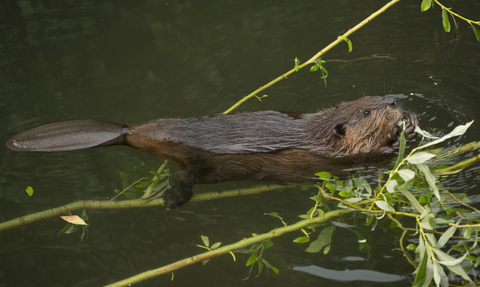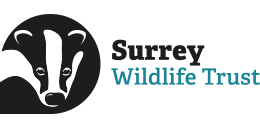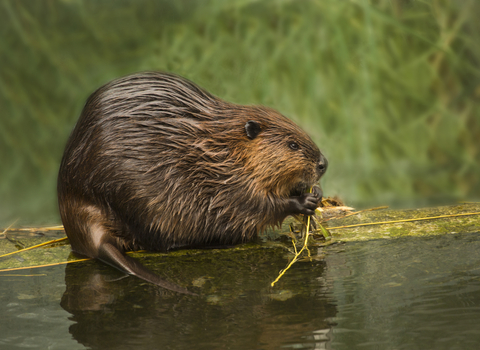
© David Parkyn
Eurasian Beaver
Latin name: Castor fiber
Size: Up to 1m
Weight: 18-30 kg
Lifespan: Average of 7-8 years (sometimes up to 25 years)
Family life
- Monogamous, family-focused mammal. 1-4 kits are born each spring and stay with the group for two years.
- Strictly vegetarian, eating a variety of wetland vegetation.
Achievements
- Played a crucial role in shaping the UK’s wetland landscapes since prehistoric times. Created mosaics of lakes, meres, mires, tarns and boggy places which supported hundreds of other species.
- Provided economic and social benefits to people from the British Isles and continental Europe by making landscapes more beautiful, resilient and biodiverse.
Aspirations
- Build dams to trap sediment, improve water quality, hold back floodwater, recharge groundwater tables and increase cover for fish and aquatic invertebrates.
- Create wetland habitat suitable for Water Voles, Otters, Water Shrews, snakes, frogs, toads, dragonflies, damselflies, birds, butterflies and marsh plants.
- Coppice waterside trees and shrubs, leading to thick low-level regrowth to benefit birds and other animals.
- Bring pleasure to local people and wildlife watchers.
Special requirements
- Currently extinct in Surrey (hunted to national extinction for fur and castoreum - a scent gland secretion used in perfumes and medicine - in the 1600s), so need help to return.
- Supervision required to ensure impact on landscapes and property is properly monitored and managed.
- 3km2 of safe territory per family required.
Fun facts about me
- Can remain underwater for 15 minutes.
- Can digest tree bark.
- Second-heaviest global rodent, beaten only by the South American Capybara.
- Flat, paddle-like tail is called a ‘scoop’.
- Reintroduced to habitats across more than 25 European countries.
Ecosystem Engineers Appeal
Surrey Wildlife Trust is on a mission to restore Surrey’s natural world - and we think that the Eurasian Beaver can help us do this. These incredible animals could help to transform our landscapes, creating thriving wetlands that benefit both wildlife and people.


